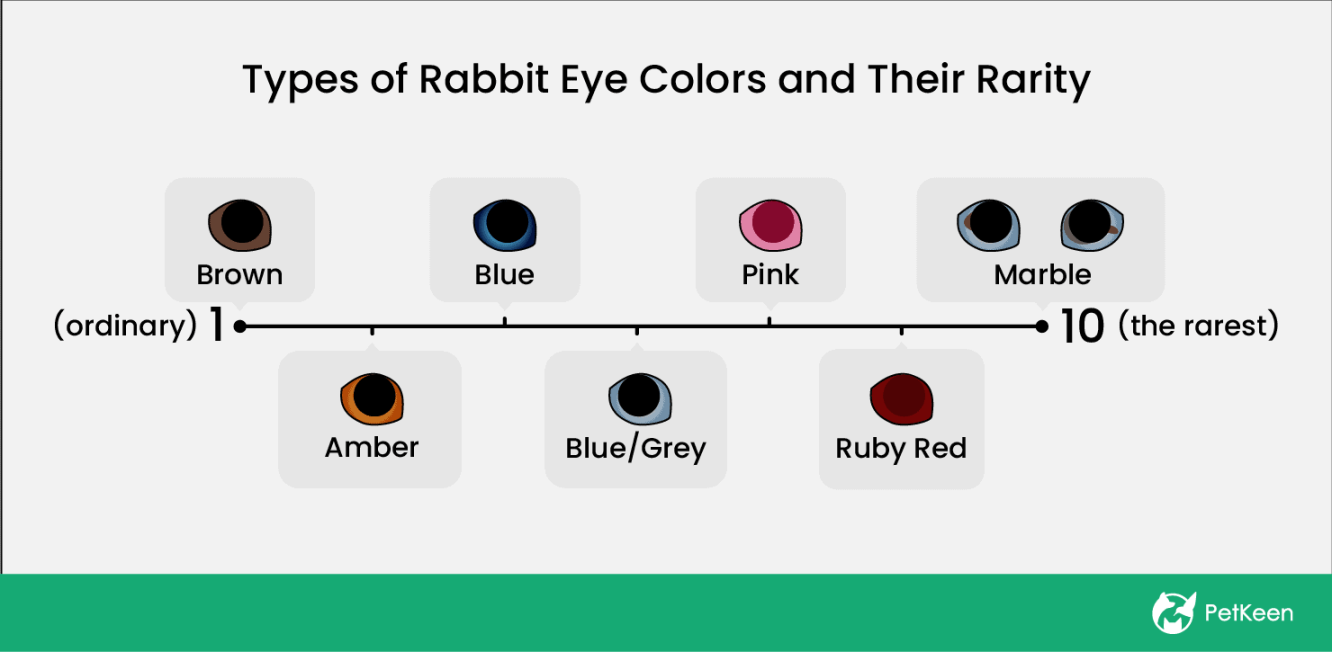What Color Are Rabbit Eyes?
Rabbits are fascinating creatures with a variety of eye colors. While most people associate rabbits with red or pink eyes, not all rabbits have this eye color. In fact, the color of a rabbit’s eyes can vary depending on their breed, genetics, and even their age. Let’s explore the different colors that rabbit eyes can be!

Possible Eye Colors for Rabbits
Rabbit eyes can range from traditional red or pink to various shades of brown, blue, gray, or even black. Here are some common eye colors you might find in rabbits:
- Red or Pink Eyes: Many white rabbits have red or pink eyes due to a lack of pigmentation in their eyes. This lack of pigmentation allows the blood vessels in the eyes to show through, resulting in their unique eye color.
- Blue Eyes: Some rabbits, particularly those with coats that have a dilution gene, can have stunning blue eyes. This eye color is often associated with Siamese or Himalayan rabbit breeds.
- Brown Eyes: Brown is a common eye color in rabbits and can range from light hazel to dark brown. Many rabbits with brown fur have complementary brown eyes.
- Gray Eyes: Some rabbit breeds, such as the Chinchilla, have gray eyes that complement their silver or gray fur. These eyes can vary in shade, from light gray to a deeper charcoal color.
- Black Eyes: Black is another common eye color in rabbits, especially among those with dark fur. These eyes can appear shiny and give the rabbit a mysterious look.
Factors Affecting Rabbit Eye Color
Several factors contribute to the color of a rabbit’s eyes:
- Breed: Different rabbit breeds have different default eye colors. Some breeds are more likely to have red or pink eyes, while others are more likely to have blue or brown eyes.
- Genetics: The genes inherited from a rabbit’s parents play a significant role in determining eye color. Just like with humans, certain genes can result in specific eye colors.
- Pigmentation: The amount of pigmentation in a rabbit’s eyes can influence its color. Less pigmentation can lead to lighter, more translucent eye colors, while more pigmentation can result in darker, more intense eye colors.
- Age: A rabbit’s eye color can change as it grows older. Some baby rabbits are born with blue eyes that gradually darken as they mature. This change in eye color is quite common.
It’s important to note that not all rabbits of the same breed will have the exact same eye color. Just like humans, rabbits can have individual variations in eye color, even within the same breed.
Frequently Asked Questions (FAQs)
1. Can a rabbit have different-colored eyes?
Yes, it is possible for a rabbit to have different-colored eyes. This condition, known as heterochromia, occurs when there is a variation in the amount of pigmentation in each eye. It can result in fascinating and unique eye colors.
2. Do rabbits with red or pink eyes have vision problems?
Rabbits with red or pink eyes do not necessarily have vision problems. The lack of pigmentation in their eyes does make them more sensitive to light, so they might prefer dimmer environments. However, they can still see and function normally.
3. Can a rabbit’s eye color change over time?
Yes, a rabbit’s eye color can change as they grow older. This change is most noticeable in baby rabbits born with blue eyes, which gradually darken as they reach adulthood. Other eye color changes can occur due to genetics or certain health conditions.
4. Are rabbits with blue eyes more prone to blindness?
No, rabbits with blue eyes are not more prone to blindness solely because of their eye color. The risk of blindness in rabbits is generally associated with other factors such as genetics, age, and underlying health conditions. Eye color alone is not a determining factor for blindness in rabbits.
Related Articles…
Copyright Notice:
The images displayed here are sourced from the internet, with copyrights held by respective owners. For removal of any copyrighted image, please email us.